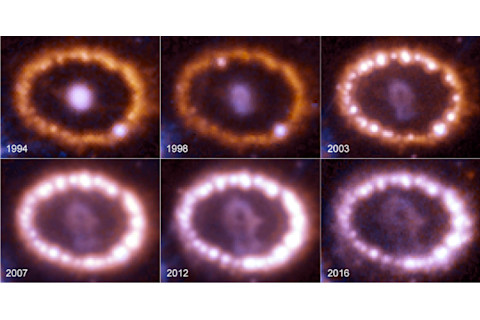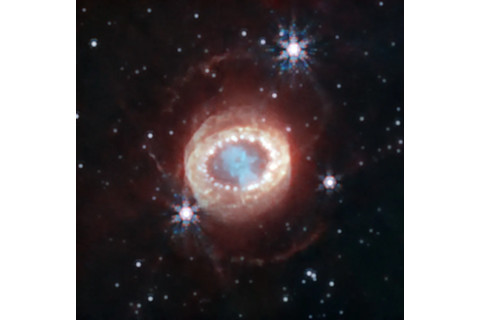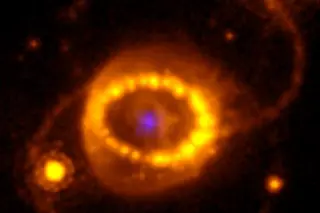The James Webb Space Telescope (JWST) first imaged Supernova 1987A (SN) in September 2022. The image captured a mysterious dusty and gassy center that formed during the supernova’s explosion. The dust is so thick it shrouds near-infrared light. But, within the dusty center, a powerful hot neutron star may be lurking underneath, according to a new study published in Science.
“It was so exciting looking at the JWST observations of SN 1987A for the first time. As we checked the MIRI and NIRSpec data, the very bright emission from argon at the center of SN 1987A jumped out. We knew immediately that this was something special that could finally answer the question on the nature of the compact object,” said Patrick Kavanagh, the study's co-author and an astrophysicist at Maynooth University, in a press release.
An Explosion in the Sky

SN 1987A as seen by the Hubble Space Telescope over the years. (Credit: NASA, ESA, and R. Kirshner (Harvard-Smithsonian Center for Astrophysics and Gordon and Betty Moore Foundation), and P. Challis (Harvard-Smithsonian Center for Astrophysics))
NASA, ESA, and R. Kirshner (Harvard-Smithsonian Center for Astrophysics and Gordon and Betty Moore Foundation
Researchers first observed SN 1987A 37 years ago. It is the nearest and brightest supernova to Earth and, since then, has been the most studied supernova. SN 1987A burst into the sky on February 23, 1987, at 160,000 light years away. Even at this distance, the supernova was visible in the sky for several months before fading. Researchers also detected SN 1987A using its neutrinos.
After SN 1987A exploded, scientists predicted that it possibly formed a black hole or a neutron star at its center. The supernova’s neutrino burst hinted to researchers that what had formed at the center was a neutron star, but they had no conclusive evidence until the JWST.
Using the JWST’s MIRI and NIRSpec instruments, scientists found that the argon and sulfur atoms around the area where the supernova occurred were ionized. Only an event like a neutron star that blasted the particles with ultraviolet or X-ray radiation could have ionized the atoms. Strong cosmic winds from a rotating neutron star mixing with the supernova’s material could also have caused this.
A Neutron Star

SN 1987A as seen by the James Webb Space Telescope (Credit: NASA, ESA, CSA, M. Matsuura (Cardiff University), R. Arendt (NASA’s Goddard Spaceflight Center & University of Maryland, Baltimore County), C. Fransson)
NASA, ESA, CSA, M. Matsuura (Cardiff University
In their study, the authors note that what ionized the atoms could have been a neutron star in one of two scenarios. It may have been the radiation emanating from the blazing, million-degree heat from the new star or from particles that accelerated in the supernova’s magnetic field as the neutron star rapidly spun. Models agree with both neutron star options. But which one is more challenging to pinpoint? More observations with JWST and on-the-ground telescopes may help the team glean more information.
Either way, both options fit with the team’s speculations of a neutron star residing in the center of SN 1987A.














